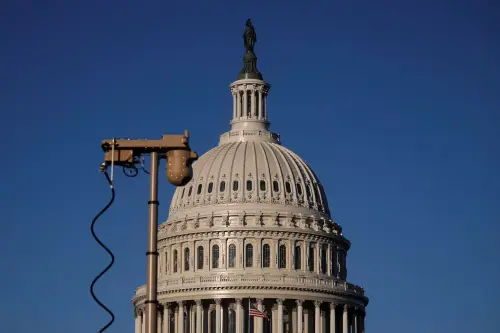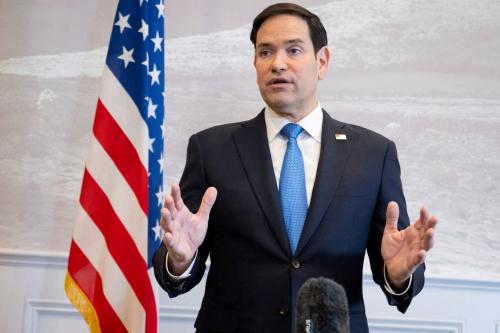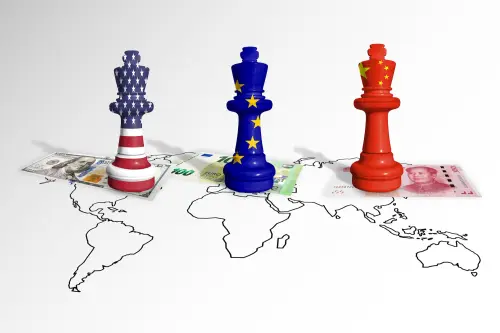Introduction
After a decade of intense focus on Iraq and North Korea, the U.S. defense planning community needs to devote more attention to possible war in the Taiwan Strait. The China-Taiwan relationship is structurally unstable, and potentially explosive. China (also known as the People’s Republic of China, or PRC) insists that Taiwan is a part of its territory, whereas Taiwan refuses to be ruled by Beijing.
Although Taiwan’s new president, Chen Shui-bian, has stated that he will avoid declaring independence from the PRC, his Democratic Progressive Party has long called for just such a declaration of independence. Chen himself is willing to forgo one only on the grounds that it is unnecessary, given that Taiwan is already sovereign in his eyes.1
Beijing has welcomed President Chen’s restraint, and even offered to view the TAIWAN as an equal partner in negotiations rather than as a local, renegade government. But it has also issued a recent white paper threatening that it will not wait for reunification indefinitely, stated that Chen must publicly renounce his party’s stand on independence and explicitly reaffirm the “one China” principle, and reminded the international community that it reserves the right to use force against Taiwan to “safeguard its own sovereignty and territorial integrity.”2 Chinese officials recognize that their military will not excel until their economy develops further—a conclusion that would seem to counsel strategic patience on Beijing’s part.3 They also understand, however, that Taiwan is improving its own armed forces, and note pro-independence trends among the Taiwanese population. For the Chinese, these latter concerns argue against patience.4
Any war between the two Chinas could easily involve the United States. Under the 1979 Taiwan Relations Act, official U.S. law stipulates that the United States would view any conflict over Taiwan with “grave concern.”5 The 1995-96 Taiwan Strait crisis showed that the United States does not take its interest in Taiwan’s security lightly. A 1995 visit by Taiwanese President Lee Teng-hui to his American alma mater, Cornell University, provoked China to conduct military exercises and fire missiles near Taiwan, leading the United States to send an aircraft carrier through the strait that same December for the first time in seventeen years. In March 1996, the PRC launched more missiles near Taiwan; in response, the United States deployed two carriers in the vicinity as a show of strength.6 Largely as a result of the 1995-96 crisis, much of the U.S. Congress has lost patience with the existing U.S. policy of strategic ambiguity—by which Washington suggests to both Taipei and Beijing that it might help Taiwan defend itself, but does not commit itself to doing so—preferring an unambiguous commitment to defend Taiwan instead.7
War over Taiwan could take a number of forms. An attempted PRC invasion of the TAIWAN is the most dire possibility, and my primary focus in this article. Some Pentagon analysts believe China could prevail in such an attack. As a 1999 Department of Defense report puts it, a “campaign would likely succeed—barring third-party intervention.”8
China’s true views on the feasibility of the invasion option are unclear, but worrisome.9 Notably, when threatening Taiwanese voters not to choose Chen just before their March 2000 presidential elections, Chinese Prime Minister Zhu Rongji suggested that China’s resolve would overcome whatever material shortcomings PRC armed forces might face. As he put it, “People making such calculations [that China could not take Taiwan] don’t know about Chinese history. The Chinese people are ready to shed blood and sacrifice their lives to defend the sovereignty and territorial integrity of the motherland.”10 On the other side of the strait, many Taiwanese defense planners believe they could not hold off a Chinese assault indefinitely without U.S. help.11
My conclusions suggest strongly, however, that China could not take Taiwan, even if U.S. combat forces did not intervene in a conflict. Nor will China be able to invade Taiwan for at least a decade, if not much longer. As such, Washington need not abandon its policy of strategic ambiguity. China should be deterred from attempting an invasion by the military impracticalities of the scenario, regardless of U.S. policy.
Coercive uses of force are more likely—both because their costs to Beijing would be lower, and because their prospects of success would be greater. They include, most notably, a ballistic missile attack or a naval blockade.12 In these scenarios, however, the United States would have time to make any necessary military response; Taiwan’s very survival would not be at immediate risk. Given the dangers of a policy of strategic clarity, which could embolden Taipei to move toward independence and produce a major crisis, strategic ambiguity therefore still makes sense.
As for sales of U.S. weaponry to Taiwan, they must balance military need with broader strategic impact. Antisubmarine warfare capabilities should be a top priority, as should assistance in hardening airfields, command centers, and related infrastructure. By contrast, missile defenses should be handled carefully. In particular, Aegis-class destroyers should not be sold to Taiwan at this time. There are less incendiary, more timely, and more economical ways to improve Taiwan’s missile defenses.
My article proceeds as follows. The next section reviews the fundamentals of amphibious assault. The following section analyzes the military feasibility of an attempted PRC invasion of Taiwan. The third section considers possible Chinese missile attacks and blockades against Taiwan. The fourth section examines trends in the military balance. The conclusion considers policy implications for Washington.
The Brookings Institution is committed to quality, independence, and impact.
We are supported by a diverse array of funders. In line with our values and policies, each Brookings publication represents the sole views of its author(s).



Commentary
Can China Conquer Taiwan?
September 1, 2000